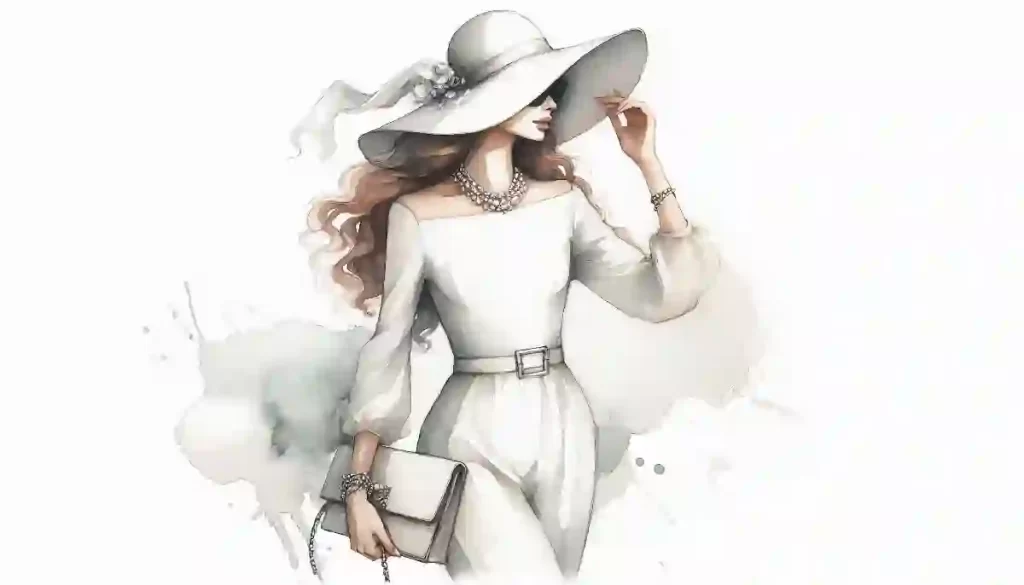Womens Purses
The Psychology of Women’s Purses: Meaning, Symbolism, and Style
Table of Contents
Introduction
The psychology of women’s purses goes far beyond fashion. For centuries, purses have carried more than just personal belongings, they have carried meaning, identity, and even emotional comfort. Today, women’s handbags are both functional tools and symbolic accessories, often revealing subtle details about personality, lifestyle, and social aspirations. A feature by Pop Fashion underscores that handbags serve as powerful vehicles for signaling personal values, identity, and social status (Pop Fashion, 2024).
Fashion psychologists argue that accessories are rarely neutral; they shape how women feel about themselves and how others perceive them. According to psychologist Carolyn Mair, fashion and accessories act as extensions of our identity, influencing both mood and social perception (APA, 2024). This explains why so many women form an emotional attachment to handbags, seeing them not only as storage but also as objects tied to memory, security, and confidence. This aligns with psychological theories of object attachment, where personal items become symbols of identity and emotional security (Psychology Today, 2025). From luxury purses that symbolize status to everyday totes that highlight practicality, bags are deeply woven into self-expression.
Equally fascinating is the way purse symbolism in fashion has evolved over time. A clutch might represent elegance and control, while a crossbody signals independence and convenience. Meanwhile, women’s handbag preferences continue to shift under the powerful influence of social media on fashion, where Instagram trends and influencer culture can transform a niche accessory into a global phenomenon overnight. Social media research shows that influencers and viral content have the power to transform niche accessories into mainstream fashion trends almost overnight (Djafarova & Bowes, 2021).
This article explores the psychology behind women’s purses in detail, from emotional bonds and symbolic meanings, to personality-driven preferences and digital-age influences. By the end, you’ll see why a handbag is never just a handbag, but a personal statement that blends practicality, memory, and style.
Why Do Women Carry Purses?
At first glance, a purse might seem like nothing more than a convenient storage accessory. But the psychology of women’s purses shows us that they represent far more than practicality. Historically, purses were used by both men and women to carry coins and personal items. Over time, as women’s fashion evolved and clothing began to lack functional pockets, purses became essential for carrying everyday necessities.
Today, purses serve as a portable personal space, almost like a miniature home that travels everywhere. Inside a handbag, women carry items that provide security, comfort, and identity: from wallets and phones to makeup, keys, and sentimental keepsakes. In this way, a purse represents independence, as it ensures that important items are always within reach.
Beyond utility, purses also reflect purse symbolism in fashion. Carrying a bag can communicate self-expression, social belonging, or even empowerment. For many women, selecting a handbag isn’t just about what fits inside, it’s about choosing something that signals their values, style, or aspirations.
The growth of women’s handbag preferences across cultures also highlights differences in how bags are perceived. In some contexts, they symbolize elegance and refinement, while in others they highlight resilience and practicality. Regardless of style, the purse carries both tangible and psychological importance.
The Emotional Attachment to Purses
One of the most fascinating aspects of the psychology of women’s purses is the deep emotional bond many women form with their bags. Unlike other accessories that may come and go, purses often carry sentimental value and personal history.
A handbag can become a symbol of memories and milestones. For example, a woman may cherish a purse purchased during a special trip abroad or treasure a bag gifted by a loved one. Each time it’s carried, the purse can serve as a reminder of those meaningful experiences. This emotional attachment goes beyond fashion; it turns the purse into a piece of personal identity.
Purses also provide emotional security and comfort. Carrying essential items such as makeup, tissues, or small keepsakes allows women to feel prepared and confident in any setting. This explains why some people hold on to older bags long after they’ve lost practicality, the purse has become tied to their sense of self.
Furthermore, the symbolism of purses can shift over time. For younger women, a first luxury handbag may feel like a sign of independence and success. Later in life, purses may represent stability, professionalism, or even legacy, especially when bags are passed down from one generation to another.
In short, handbags are not just containers for belongings. They become helpful companions, woven into daily routines, emotional journeys, and self-expression.
The Symbolism of Different Purse Styles
When it comes to the psychology of women’s purses, the style of bag a woman chooses often speaks volumes about her personality, lifestyle, and aspirations. Just as clothing communicates identity, purse styles act as visual cues of individuality.
Clutch Bags – Symbols of Elegance and Control
A clutch bag is often associated with sophistication and formality. Because it is small and minimalist, carrying a clutch communicates refinement and intentionality. Women who favor clutches tend to value elegance and may project confidence in social or professional settings. The clutch’s limited space also suggests a personality that appreciates organization and carrying only the essentials.
Tote Bags – Versatility and Preparedness
Totes are among the most practical and popular styles. Spacious and functional, they symbolize readiness for any occasion. Women who carry totes often balance multiple roles in their daily lives, whether as students, professionals, or busy parents. The tote bag reflects reliability, versatility, and the ability to blend function with fashion.
Crossbody Bags – Convenience and Independence
Crossbody bags, designed for hands-free wear, embody mobility and practicality. They are especially popular with women who lead busy, active lifestyles and need their hands free for multitasking. Choosing a crossbody can symbolize independence and a preference for effortless, no-fuss styling while still valuing security.
Luxury Designer Bags – Status and Achievement
High-end handbags such as Chanel, Louis Vuitton, or Hermès represent more than fashion, they are cultural symbols of success and social standing. Owning a designer bag often signals not just financial ability but also an appreciation for craftsmanship and exclusivity. For many women, investing in a luxury purse can feel like a personal milestone or a form of empowerment.
At the heart of purse symbolism lies a balance: some women prefer functionality above all, while others see purses as statements of personality, taste, and aspiration. No matter the choice, each bag carries unspoken meaning about the woman who wears it.
Purse Preferences Based on Personality Types
Another fascinating angle in the psychology of women’s purses is how personality influences bag choices. Just as clothing styles often mirror someone’s inner character, purse preferences can reveal subtle traits about lifestyle, values, and outlook.
Minimalists – Function Over Frills
Women who gravitate toward smaller purses, such as slim crossbody bags or compact satchels, often value efficiency and simplicity. They prefer a clutter-free lifestyle and carry only the essentials, reflecting a personality that prioritizes organization and calm. For minimalists, a purse isn’t about show, it’s about function.
Adventurers – Ready for Anything
Those who lean toward oversized totes, backpacks, or convertible bags tend to be spontaneous and adaptable. Their bag is a reflection of their personality: prepared, flexible, and adventurous. Carrying larger purses suggests independence and an openness to new experiences, as if they’re always ready for what the day might bring.
Social Butterflies – Bold and Expressive
Women who prefer eye-catching purses with bold colors, unique textures, or statement designs often enjoy standing out in social settings. These purses act as conversation starters and expressions of creativity. Choosing vibrant or unusual designs suggests confidence, extroversion, and a flair for self-expression.
Traditionalists – Classic and Timeless
Some women consistently reach for structured leather handbags in neutral shades. These choices indicate a preference for tradition, professionalism, and timelessness. Their purses often align with practicality and longevity, reflecting a personality that values consistency and reliability.
Impact of Social Media on Purse Trends
In today’s digital age, social media plays a defining role in shaping the psychology of women’s purses. Platforms like Instagram, TikTok, and Pinterest don’t just showcase fashion, they actively create and accelerate purse trends worldwide.
Influencers as Trendsetters
Style influencers and celebrities often dictate what becomes popular. When an influencer posts a designer handbag or a unique purse style, demand can skyrocket almost overnight. A previously niche or boutique design can suddenly become a must-have item simply because it appeared in the right feed.
The Rise of “Unboxing” and “What’s in My Bag” Content
Unboxing videos and “What’s in my bag?” posts have become cultural phenomena, giving purses more than just fashion value. These videos turn bags into objects of aspiration, showing not only the design but also the lifestyle they symbolize. A purse becomes more than an accessory; it’s a gateway to a curated identity.
Aspirational Culture and Comparison
Social media also encourages comparison. Women often feel pressure to own certain purse styles to project an image of success, elegance, or modernity. Whether it’s a luxury designer handbag or a trendy crossbody, purse choices can be heavily influenced by what is trending online.
Accessibility Through Digital Shopping
At the same time, social platforms make affordable alternatives easier to discover. Hashtags like #affordablebags or #budgetstyle allow shoppers to find chic, budget-friendly purses without relying on luxury designers. This democratization of fashion ensures that trends are no longer limited to those with large budgets.
Ultimately, social media acts as both a mirror and a magnifier: it reflects existing tastes while amplifying them to global scale. The result is that purses are no longer just personal accessories, they are public statements, curated for both real life and the digital world.
Conclusion: Purses as Personal Statements
At their core, women’s purses are far more than storage solutions. They serve as psychological extensions of identity, blending practicality with deep emotional and social meaning. From the minimalist’s crossbody to the adventurer’s oversized tote, from the social butterfly’s bold statement piece to the traditionalist’s timeless leather bag, each choice reflects personality and lifestyle.
Purses also carry memories, gifts from loved ones, souvenirs from travel, or milestones of career success. This emotional attachment makes a purse not just an accessory but a symbol of empowerment, independence, and self-expression.
In the digital era, the influence of social media has magnified this symbolism. Platforms like Instagram and TikTok don’t just showcase bags; they transform them into status markers and aspirational objects, shaping what women want and how they express themselves through fashion. The purse has become as much a part of one’s online persona as it is a practical item in daily life.
Ultimately, the psychology of women’s purses reminds us that every bag tells a story. It’s a story of identity, personality, social influence, and emotional connection. Whether chosen for utility, elegance, or statement-making flair, purses reveal much more than what they carry inside, they reveal who we are, who we aspire to be, and how we wish to be seen.
FAQ’s – The Psychology of Women’s Purses: Meaning, Symbolism, and Style
Why do women carry purses?
Women carry purses for practical reasons like storing personal items, but also for emotional comfort and self-expression, as purses serve as mobile private spaces.
Why do women develop emotional attachments to purses?
Women often attach memories and sentimental value to purses, linking them to special events or stages of life, making them meaningful beyond their utility.
What do different purse styles symbolize?
Different styles reflect personality traits—clutches represent elegance, totes signal practicality, and luxury bags often indicate wealth or success.
How does personality influence purse preferences?
A woman’s purse choice often mirrors her personality, with minimalists preferring smaller, efficient bags, while adventurers opt for larger, versatile designs.
How has social media influenced purse trends?
Social media platforms, especially Instagram, have popularized specific purse styles, turning niche designs into global trends through influencer endorsements and viral content.
What psychological role does a purse play for women?
A purse can be an extension of a woman’s identity, offering a sense of security and serving as a symbolic representation of her personality and status.
Why do some women prefer designer handbags?
Designer handbags are often viewed as status symbols, reflecting success, luxury, and a preference for high-quality craftsmanship, enhancing personal and social identity.
Reference List
Belk, R. W. (1988). Possessions and the extended self. Journal of Consumer Research, 15(2), 139–168. https://doi.org/10.1086/209154
Edwards, T. (2011). Fashion in focus: Concepts, practices and politics. Routledge.
Djafarova, E., & Bowes, T. (2021). ‘Instagram made me buy it’: Generation Z impulse purchases in fashion industry. Journal of Retailing and Consumer Services, 59, 102345. https://doi.org/10.1016/j.jretconser.2020.102345
Kapferer, J.-N., & Bastien, V. (2012). The luxury strategy: Break the rules of marketing to build luxury brands (2nd ed.). Kogan Page.


 Two-Tier Cosmetic Organizer - Portable Beauty Storage Box with Trays
Two-Tier Cosmetic Organizer - Portable Beauty Storage Box with Trays  Travel-Friendly Cosmetic Box - Durable and Elegant Design
Travel-Friendly Cosmetic Box - Durable and Elegant Design 